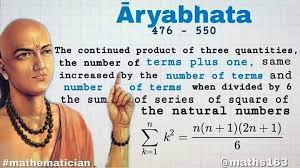The equation ax + by = c, where a,b,ca, b, c are integers and x,yx, y are unknown integers, is an example of a linear Diophantine equation. The method Aryabhata used to solve such equations is called Kuttaka, which means “pulverizer” in Sanskrit, referring to the repeated division process used in the solution.
- Earliest Recorded Use: Aryabhata (476 CE) described the Kuttaka method in his seminal work, the Aryabhatiya (499 CE). This was one of the earliest systematic approaches to solving linear Diophantine equations.
- Continued Division Process: His method involved a form of the Euclidean algorithm, where successive division steps are used to find integer solutions for xx and yy.
- Application in Astronomy: Aryabhata used the Kuttaka method to solve astronomical and calendrical problems, such as determining planetary positions and eclipse calculations.
- Later Developments: The method was later refined by Brahmagupta (7th century CE) and Bhaskara I & II, who extended it to more complex equations, including the general Pell’s equation.
The equation is called a Diophantine equation after the Greek mathematician Diophantus of Alexandria (circa 3rd century CE), who studied integer solutions to polynomial equations.
However, Aryabhata’s Kuttaka method predated the systematic European approach to solving these equations by centuries.
Lagrange (18th century) and other Western mathematicians later rediscovered and formalized many of these ideas.
Suppose we need to solve:
7x+5y=17x + 5y = 1
- Express the equation in the form of division:
7÷5=17 \div 5 = 1 remainder 2 → Rewrite as:
7−1(5)=27 – 1(5) = 2
5÷2=25 \div 2 = 2 remainder 1 → Rewrite as:
5−2(2)=15 – 2(2) = 1
Back-substituting:
1=5−2(7−5)=3(5)−2(7)1 = 5 – 2(7 – 5) = 3(5) – 2(7)
Thus, a particular integer solution is x=−2,y=3x = -2, y = 3. General solutions can be found using modular arithmetic.
Influenced Indian mathematics, especially in number theory and algebra.
Adopted by Persian and Arab mathematicians, influencing later Islamic and European mathematical traditions.
Formed the foundation of modular arithmetic used in modern cryptography and computing.







